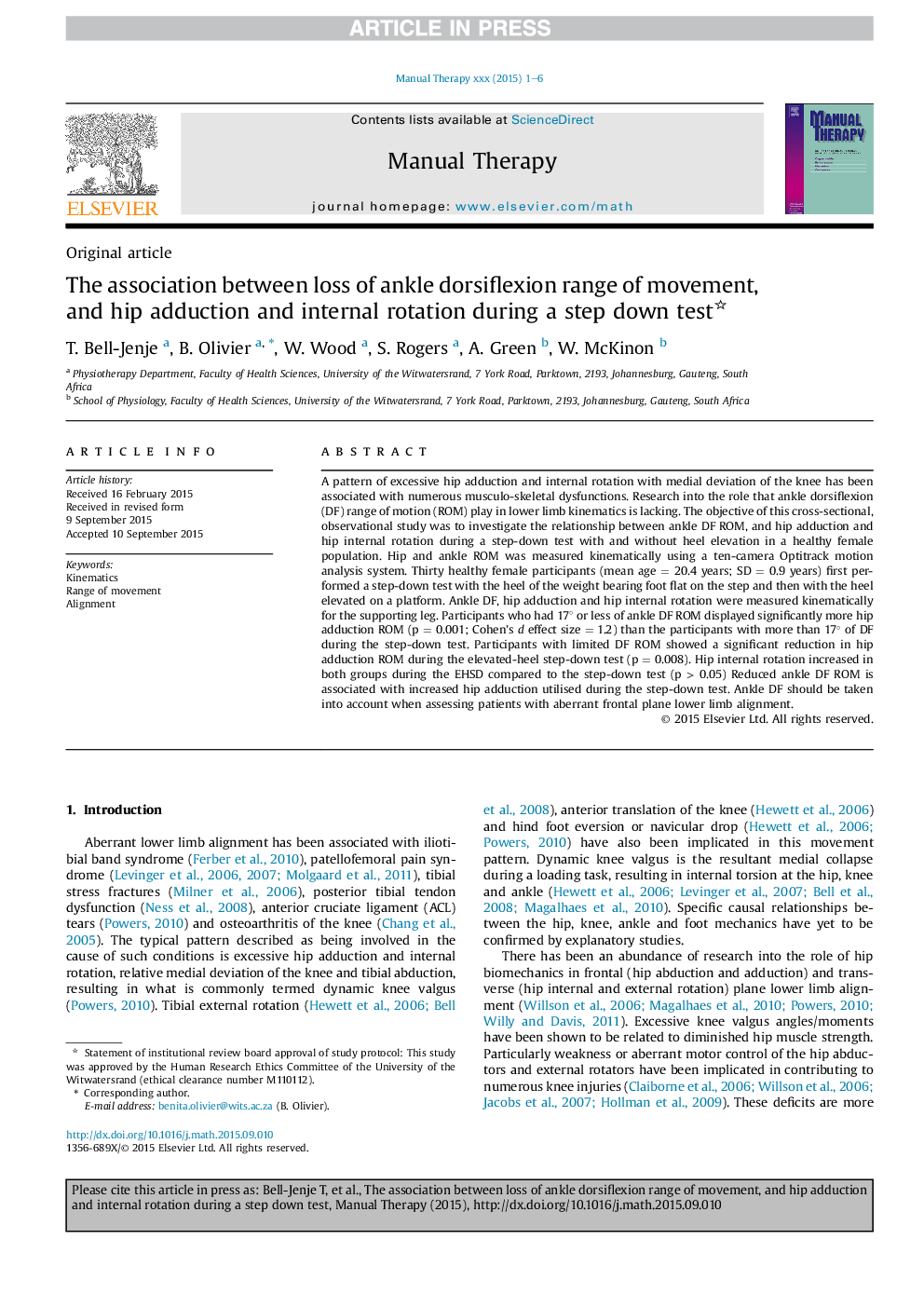| Article ID | Journal | Published Year | Pages | File Type |
|---|---|---|---|---|
| 5864630 | Manual Therapy | 2016 | 6 Pages |
Abstract
A pattern of excessive hip adduction and internal rotation with medial deviation of the knee has been associated with numerous musculo-skeletal dysfunctions. Research into the role that ankle dorsiflexion (DF) range of motion (ROM) play in lower limb kinematics is lacking. The objective of this cross-sectional, observational study was to investigate the relationship between ankle DF ROM, and hip adduction and hip internal rotation during a step-down test with and without heel elevation in a healthy female population. Hip and ankle ROM was measured kinematically using a ten-camera Optitrack motion analysis system. Thirty healthy female participants (mean age = 20.4 years; SD = 0.9 years) first performed a step-down test with the heel of the weight bearing foot flat on the step and then with the heel elevated on a platform. Ankle DF, hip adduction and hip internal rotation were measured kinematically for the supporting leg. Participants who had 17° or less of ankle DF ROM displayed significantly more hip adduction ROM (p = 0.001; Cohen's d effect size = 1.2) than the participants with more than 17° of DF during the step-down test. Participants with limited DF ROM showed a significant reduction in hip adduction ROM during the elevated-heel step-down test (p = 0.008). Hip internal rotation increased in both groups during the EHSD compared to the step-down test (p > 0.05) Reduced ankle DF ROM is associated with increased hip adduction utilised during the step-down test. Ankle DF should be taken into account when assessing patients with aberrant frontal plane lower limb alignment.
Keywords
Related Topics
Health Sciences
Medicine and Dentistry
Complementary and Alternative Medicine
Authors
T. Bell-Jenje, B. Olivier, W. Wood, S. Rogers, A. Green, W. McKinon,
